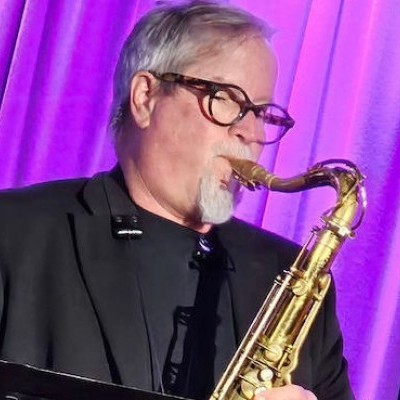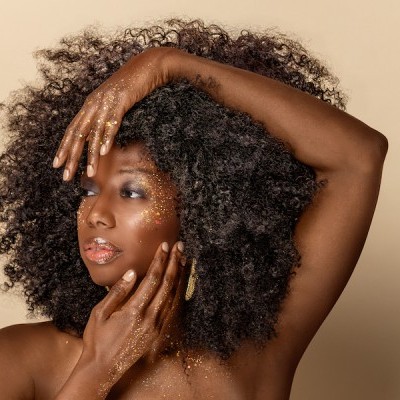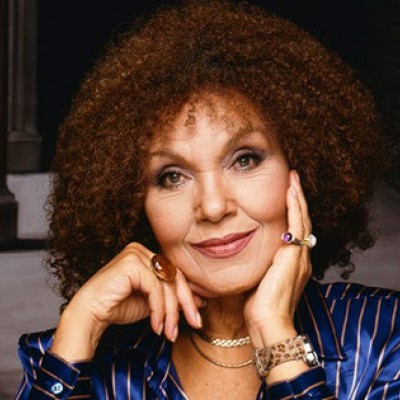Oct 28, 2025 10:47 AM
In Memoriam: Jack DeJohnette, 1942–2025
Jack DeJohnette, a bold and resourceful drummer and NEA Jazz Master who forged a unique vocabulary on the kit over his…

Roswell Rudd
(Photo: Courtesy of Hubtone PR)Trombonist Roswell Rudd, who had been suffering from cancer, died Dec. 21. He was 82.
In tribute, DownBeat is reposting a recent interview, which was written by Bill Milkowski and originally posted Dec. 1, 2017.
(To read a recap of the Nov. 16 concert at Dizzy’s to celebrate Roswell Rudd’s 82nd birthday, click here).
‘My Ears Have Been My Guide’
Trombonist-composer and intrepid improviser Roswell Rudd has been on a musical path for more than 60 years. Born in Sharon, Connecticut, on Nov. 17, 1935, he attended Yale University, where he joined a boisterous trad jazz band dubbed Eli’s Chosen Six. The band’s self-titled debut was released on Columbia Records in 1957.
After moving to New York City, he fell into a burgeoning free-jazz scene and eventually recorded with the likes of Buell Neidlinger, Cecil Taylor, Steve Lacy, Dennis Charles and Archie Shepp, all of whom appear on the 1961 Candid album New York City R&B.
From 1960 to 1962 he played with pianist Herbie Nichols, who became an important mentor for Rudd. And from 1961 to 1964, Rudd co-led a quartet with drummer Charles and bassist Henry Grimes that exclusively played the music of Thelonious Monk.
Shepp became a key collaborator through the ’60s as Rudd appeared on the saxophonist’s Impulse! albums Four For Trane (1961), Live In San Francisco (1966) and Mama Too Tight (1966). The trombonist also joined saxophonist John Tchicai, bassist Lewis Worrell and drummer Milford Graves in the New York Art Quartet in 1964 and played on the soundtrack for the 1964 film New York Eye and Ear Control with Tchicai, Don Cherry, Albert Ayler, Gary Peacock and Sunny Murray.
Through the ’70s, Rudd collaborated with such forward-thinking European jazz artists as the Dutch pianist Misha Mengelberg, Italian trumpeter Enrico Rava and Dutch drummer Han Bennink and also recorded frequently with pianist Carla Bley.
In the ’80s, he appeared on Hal Willner’s 1984 concept album That’s The Way I Feel Now: A Tribute To Thelonious Monk and recorded with the rock group NRBQ (1989’s Wild Weekend). In 1999, Rudd reunited with Steve Lacy on the Verve album Monk’s Dream and with the New York Art Quartet on 35 Reunion.
In 2000, he reunited with Shepp at the Jazz Standard for the 2001 Verve album Live In New York. That same year, Rudd and his producer and partner Verna Gillis went to Mali, which resulted in a cross-cultural collaboration with kora player Toumani Diabate on the 2003 Sunnyside album MALIcool.
Rudd continued his world music trailblazing for Sunnyside with 2005’s Blue Mongol, recorded with Mongolian Buryat Band, and 2007’s El Spiritu Jibaro, a collaboration with the great Puerto Rican cuatro player Yomo Toro. Rudd’s 2009 Sunnyside release, Trombone Tribe, was his answer to J.J. Johnson’s Brass Orchestra or Slide Hampton’s World of Trombones.
In the past couple of years, Rudd has continued his open-eared experimentation by collaborating with folk singer Heather Masse on 2016’s August Love Song (Red House Records) and with keyboardist Jamie Saft on Strength & Power (RareNoise Records).
Rudd’s new album is Embrace (RareNoise), a collection of standards recorded with pianist Lafayette Harris, bassist Ken Filiano and vocalist Fay Victor.
Rudd was diagnosed with Stage 4 prostate cancer in 2013 and started another round of radiation in 2017. He is currently receiving medical care at his home in Kerhonkson, New York.
Roswell, what can you say about your 82nd birthday party at Dizzy’s the other night?
Well, I would say a lot of it is just beyond words. It was an outpouring of love, sounds and sights … people really turning out and enjoying themselves. And what a wonderful musical director—Steven Bernstein of Sexmob fame. He really knows how to do that.
He’s got a real intuitive sense of arranging spontaneously on the bandstand.
Oh yeah. It’s telepathy.
How did it feel seeing Archie Shepp up there performing?
Oh, you have no idea. It’s been quite a while since we shared the stage. When I think about music or feel music or I have an idea about music, he comes to mind.
I noticed that a few players, including Bernstein and Steve Swell, mentioned that Shepp album Live in San Francisco from 1966 as a big turning point in their lives. Do you have any memories of those days and recording that album?
That was my first time in San Francisco, and I think that [was true] for the rest of the band, too. That place that we played, it was like a Wild West bar when we got there—sawdust on the floor, kind of like the Five Spot before it became the Five Spot, you know?
And as soon as we started to play, people started to come, until the place was overflowing every night. We were hired to play for a week and it turned out to be three weeks. And it became a club —tables and chairs and waiters and all of that stuff seemed to evolve right out of the music.
Was it a smooth transition for you to go from playing Dixieland jazz for an audience of drunken college students to playing free-jazz with folks like Cecil Taylor and Archie Shepp a few years later?
There had to be a transition in terms of harmonic theory. But as far as the spirit, I’m coming from Dixieland, other people coming from collective improvisation … I never knew the difference.
Isn’t that same spirit of collective improvisation apparent in Dixieland jazz?
Oh yeah, and with the college band we took that aspect of it, those last choruses, those backgrounds or whatever they were … we took those to the sky.
Were you mostly self-taught on trombone?
Yes, but I also had some good teachers … not at Yale, unfortunately, but on Dixwell Avenue in New Haven and down in New York. So I was busy geographically as well as musically—[going] around [to] get some teaching.
Was Steve Lacy in that college band?
Occasionally. But I had known him for some time before.
How did you come to form that group with him where you focused on Monk’s music?
That was Steve’s idea and it was perfect timing; just what I needed. And you know, that’s a great repertoire. Steve and I had about 60 songs and each one was a world unto itself. And oh boy, we dug into it.
The thing is, when you start to listen to Monk you just go deeper and deeper and it’s hard to stop. I never did stop listening to Monk. I’m still learning that music. So there was plenty going on there. By 1963, Steve went to Europe and John Tchicai came to America … time for the New York Art Quartet!
The other night at Dizzy’s, I really enjoyed seeing the Trombone Tribe.
Every time I hear it, I hear something else. Because those musical personalities have a way of going deeper and creating more and more.
I love how distinctive each of the players is, from Ray Anderson to Art Baron, Steve Swell, Deborah Weisz and Josh Roseman. They each have their own very strong individual thing.
That’s exactly right.
In the last 15 years or so, beginning with MALIcool, you’ve been very ambitious about pushing into different musical territories. You seem eager to take on new musical challenges over time.
Well, I’ve been very fortunate to know Verna Gillis and to travel in some of her earlier footsteps as an ethnomusicologist and producer. And she’s discovered some new places, too. And with me, I don’t know why it is but I’ve been able to find a part for myself in all of those situations.
That beautiful album that you did recently with Heather Masse, August Love Song, was another interesting musical turn.
That required some earlier background, which I explored with Sheila Jordan and some other singers back in the ’60s. I was loving my experience with singers.
And that brings us up to Fay Victor, another wonderful singer, who is on the new album, Embrace.
Oh man! Fay and Lafayette [Harris], myself and Ken [Filiano] … we’ve been spending some time together over the last couple of years, not even thinking about recording, really, but maybe thinking about sounding good, finding our own way with it and coming out and playing for people.
And I guess we managed to do all of that and make a record, too! We’re four musical personalities that go together, whatever we’re playing, you know?
Fay sounds so soulful on this new record.
Fay is an instrument, a voice, a personality, a spirit … all of those and more. There’s something in her voice now, which I heard at that concert the other night that I hadn’t heard before. And that’s what kept me interested in Fay. Every time I had heard her, there was some kind of a new element in there.
That must’ve been your method all along for you—hearing new things in Cecil and Shepp and John Tchicai and Lacy. Just keeping your ears open.
Wide open. It’s been my ears that have been my guide.
That’s well put. I understand that you’ve been ill. You weren’t able to play the other night at your birthday tribute. Can you talk about your current state of health? Do you feel that you will ever play again?
Well, I feel as long as I can go on, eventually I will be able to play again. But I have some physical things to surmount before that’s possible. And all I can say is, I’ll stay on the case.
Yeah man, and everyone’s sending love and healing vibes your way.
They sure did on Thursday night at Dizzy’s. Boy, that was such a lift!
Definitely. If music is, indeed, a healing force …
That was a perfect example. I still feel it and I’m still riding on it.
(To read a recap of the Nov. 16 birthday concert, click here. To read a review of Embrace, a 2017 album by Rudd, Fay Victor, Lafayette Harris and Ken Filiano, click here.) —Bill Milkowski

Jack DeJohnette boasted a musical resume that was as long as it was fearsome.
Oct 28, 2025 10:47 AM
Jack DeJohnette, a bold and resourceful drummer and NEA Jazz Master who forged a unique vocabulary on the kit over his…

“I’ve told students, ‘I don’t mind if you use AI for this or that project,’” says MIT’s Pascal Le Boeuf. “‘But you need to tell me.’”
Sep 18, 2025 11:14 AM
A standard joke when it comes to discussing artificial intelligence, or AI, is that it’s developing so rapidly that…

Chuck Manning Works for NASA … and plays jazz.
Sep 18, 2025 11:23 AM
Congratulations! After years of study, you’ve earned your degree in jazz performance. But let’s face it: Making a…

Gadabout Season developed over many months of recording sessions in Brandee Younger’s East Harlem living room.
Sep 16, 2025 11:52 AM
When she’s on the road, Brandee Younger enters a hybrid state of action and contemplation. Free of daily distractions…

Cleo Laine, 1927–2025
Sep 16, 2025 10:03 AM
The music world mourns the loss of three important artists from the realms of jazz, blues and beyond with the recent…